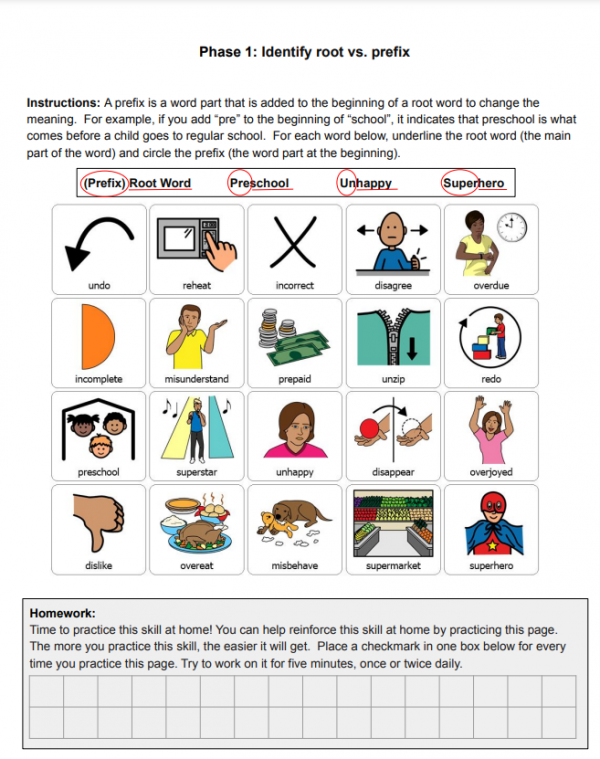Persuasive Writing for Kids
What is Persuasive Writing?
Persuasive writing is a type of writing skill that is expected of high schoolers in the United States. According to the common core curriculum, children in 9-12th grades must be able to express their ideas in discussions persuasively. The goal of persuasive writing is to win acceptance of one’s ideas.
Children with language delays may have difficulty using language in such a complex way. For that reason, they may need the help of a speech therapist to learn how to use language persuasively.
How to Teach the Persuasive Writing Format:
The first thing we can do to help these students is to teach them the standard format for a persuasive writing piece. Some schools or teachers may have their own specific format that varies slightly from the generic format I am going to show you here. If that is the case, then that teacher’s preferences should be used instead. However, this general format will work nicely for most students:
Persuasive Writing Should Include:
- Position Statement: State your opinion and arguments succinctly
- Reason: Support with facts and data
- Ethics: Convince your listener you are fair, trust-worthy and well informed
- Emotion: Appeal to listener’s emotions
- Conclusion: Restate your opinion succinctly
Now, it is important to note here that steps 2-4 can be presented in any order that makes sense in the writing. The ethics and emotion can be mixed into each fact or the student could save the ethics and emotions for before or after the facts.
Using a Pre-Writing Organizer
To help your students organize this information, you can use a pre-writing worksheet like the one I’ve created below. You can create your own or click the button below to download mine for free:
Once you have helped the student put all of the details into the pre-writing organizer, it’s time to write the paper.
Writing it All Down
Help the student take a look at his organizer and decide what order he will organize his facts and statements into. There’s no right or wrong here, but you can help the student look at all of the different information presented and decide which facts are related and should therefore be placed near each other. Have the student indicate the order he will write things in by numbering them on his organizer.
Next, have the student write out the paper using complete, grammatically correct sentences. Help him make sure he includes all of the details that he wanted to use and help him decide where to separate information into multiple paragraphs to help it flow better.
Add Transition Words and Persuasive Language to the Writing
Once the student has written the paper, he can go back and add transition words and persuasive language that will help the paper flow a little better and sound more cohesive. Here are some examples of types of language that can be used:
Transition Words:
- Therefore
- Moreover
- Furthermore
- It then follows that
- In contrast
- For instance
- For example
- Similarly
- Nonetheless
- On the contrary
- However
- In other words
- To clarify
- For that reason
- In conclusion
Persuasive Language:
- It stands to reason that
- It is true that
- Without doubt
- Obviously
- In my experience
- According to the research
- Imagine
- How would you feel if
- Wouldn’t it be nice if
- Remember when
- It seems that
- I’m sorry to tell you this, but
Final Edits
Once this work has been accomplished, a final edit can be conducted for spelling, grammar, and flow. This final edit will polish up the writing and it can then be re-written in a clean, final draft.
How This Looks in Speech Therapy
The role of a speech therapist or speech-language pathologist during this process is to help the student understand this process and know how to do it himself. This would include providing the student with the pre-writing organizers and showing him how to use them in addition to helping him outline the entire process and giving him a list of transition words and persuasive language that he can add to his writing.
The therapist could even create a notebook or folder that contains instructions for all of these steps along with copies of the pre-writing organizer so that the student can use this process when writing school assignments. However, keep in mind that the student will need to practice this several times under the supervision of the therapist before he is able to follow this process independently.
Download the Organizers:
To download the pre-writing organizers for persuasive writing as well as for writing narratives, please click the button below:

About the Author: Carrie Clark, MA CCC-SLP
Hi, I’m Carrie! I’m a speech-language pathologist from Columbia, Missouri, USA. I’ve worked with children and teenagers of all ages in schools, preschools, and even my own private practice. I love digging through the research on speech and language topics and breaking it down into step-by-step plans for my followers.
Connect with Me:







Very helpful article!
Thank you, Nancy. Glad to hear our post helped you out! Please reach out if you have any questions in the future.
Very helpful. Thank you very much.
This is helpful for my school research